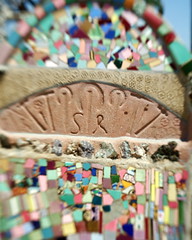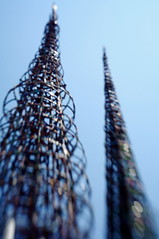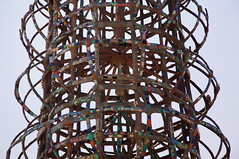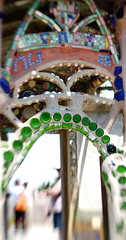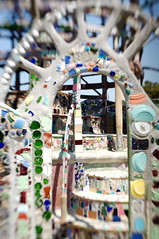Then is the new Now
October 9th, 2007 | File Under Nate, retro, west, wild | Only one comment so faror, “The Times, It Are A-Changin'”
Recently The New York Times flung open the vaults to its online article archive, permitting free access to non-advertising content as far back as 1851, complete with full-text search. Is that a valuable research tool, or an unparalleled means to waste time?
Guess that depends on how you look at it. For my part, I decided it would be interesting to look up some contemporary reporting on Wild West figures (that relates somewhat to my grad work on re-enacting).
So, for instance, you can read the very first mention of Billy the Kid, which covers his arrest in 1880. The NYT subsequently reported on his death in 1881.
If that seems like slim coverage of the most famous outlaw of the time period, he at least fared better than stagecoach robber Black Bart, who endured a longer and far more interesting career (1888). Even John Wesley Hardin warrants a more detailed “breaking news” account of his capture on board a train, the authorities having been tipped off in advance and cleared the car of bystanders.
Perhaps papers out west would have provided more in-depth coverage.
Like they gave to Butch Cassidy, whose career was covered considerably later, with more of a “follow along” feel. In 1899, the NYT reports on the first member of his gang being captured. In 1902, authorities claim they are closing in on the ringleader himself. To learn what happened next, of course, you’ll have to watch the movie.
But fame, we learn, is a two-way street. Jesse James’ first mention comes not through reportage on his actual crimes and escapes, but in the form of an 1875 letter to the editor, defending himself against the accusations of (presumably other) papers regarding his involvement in some particular escapade. So mistrustful is he of the papers that he demands they print his defense without editing for spelling and grammar. Though it’s not like he needed to tell us that.
Fame can also be fickle. Perhaps the most interesting public record is Wild Bill Hickok’s. First he is commended in 1867 for having done “good service for the Union in the war.” But the same year, he is also derided as “a gambling bummer of the low order.”
Things turn up in 1872, when he is made a Marshall, although it is not without criticism. “Violent disorders oftentimes require violent antidotes, and therefore was this man Wild BILL, chosen Marshal. He effected what a less desperate man could not, and that was an almost total cessation of street fights…”
A few months later, Hickok’s “tough love” approach to law enforcement makes for more positive news. ” .. the famous “Wild BILL” was prevailed on to take the post. This excellent person bears the reputation of never missing his man when he has leveled his fatal pistol, and of having by a judicious exercise of this engaging talent killed more men than any other on the Western frontier.”
We assume those “men” are all bad guys. Interestingly enough, the article doesn’t dwell on it but the language does seem to support Hickok’s reputation as a bit of a “slow draw artist” — not renowned for being the first to fire a shot when trouble bubbled up, but almost certain to be the last.
Alas, the career soon hit the skids yet again, and Hickok eventually moved to South Dakota to try and lose all of his money playing cards. By 1877, his death itself was not considered newsworthy by the NYT, but the execution of his killer was. From there it’s just a hop, skip, and a jump to HBO series stardom.
There’s certain to be more such gems buried in the NYT archive, though if you try it for any length of time, you will get frustrated at its lack of flexibility. Like the lack of phrase searching. “Wild Bill” turns up all articles with both words independently, rather than the exact phrase. And from the looks of it, Congress during that time period had some pretty wild days and passed quite a few bills.

